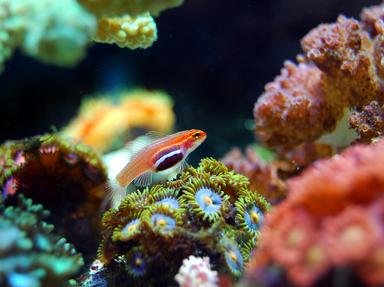Quiz Answer Key and Fun Facts
1. Despite their moniker, jellyfish are NOT fish. Some marine biologists prefer to use which of the following common names when discussing them?
2. All jellyfish are venomous to humans.
3. Which of the following anatomical body parts do jellyfish have?
4. This animal prefers VERY cool water temperatures and is largest of all jellyfish. What species is it?
5. A bunch of cows is called a herd. What is the term for a group of jellyfish?
6. Most jellyfish spend their time "gliding" or floating with the currents and thus are generally considered to be just another form of plankton. However, when some species need to move in a different direction, what "speedy" locomotive method do they employ?
7. Which of the following creatures belong to the same phylum as jellyfish?
8. Can people eat jellyfish?
9. How many body orifices do true jellyfish have?
10. Jellyfish are a favourite food of what animal?
Source: Author
Jakeroo
This quiz was reviewed by FunTrivia editor
crisw before going online.
Any errors found in FunTrivia content are routinely corrected through our feedback system.


